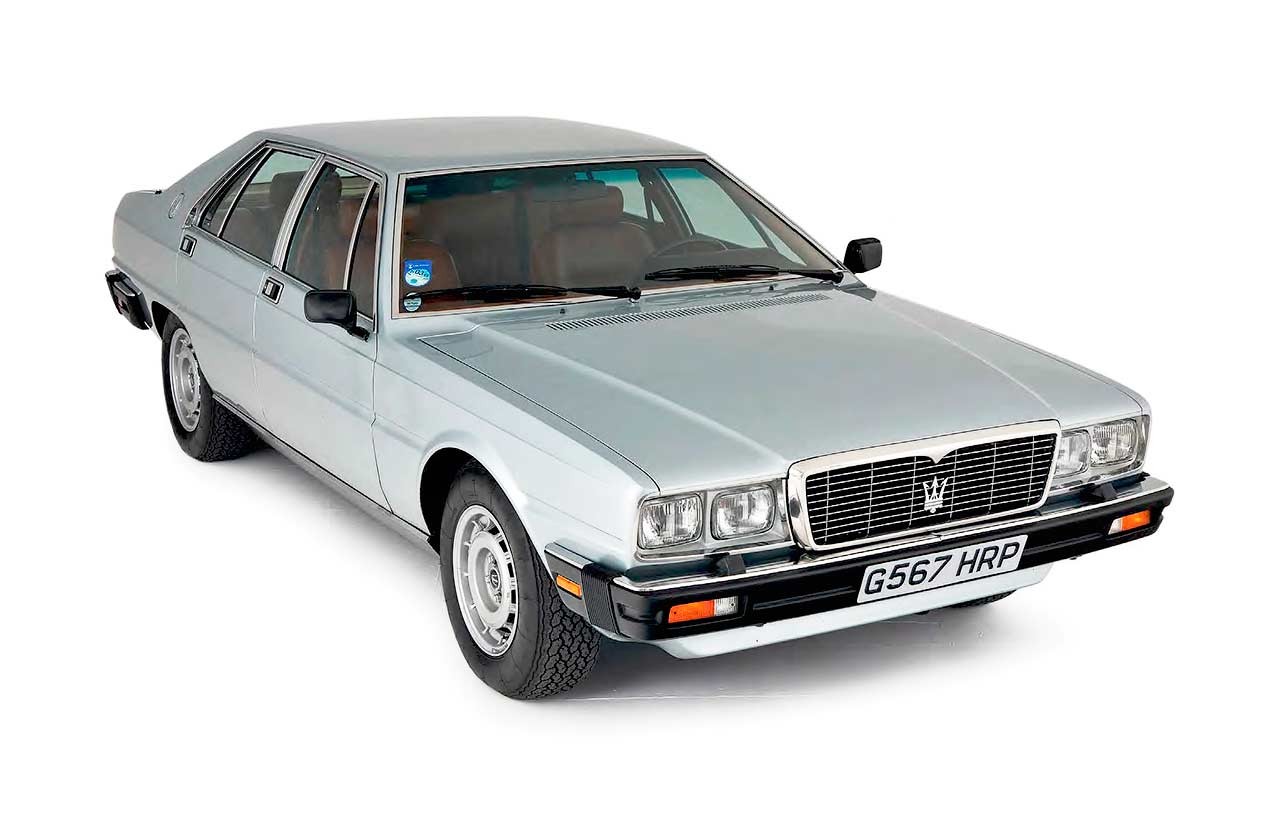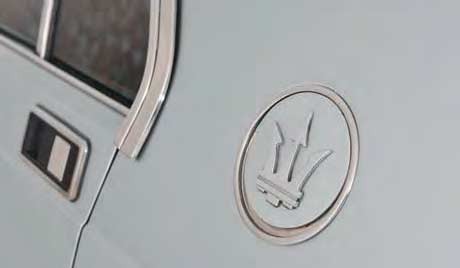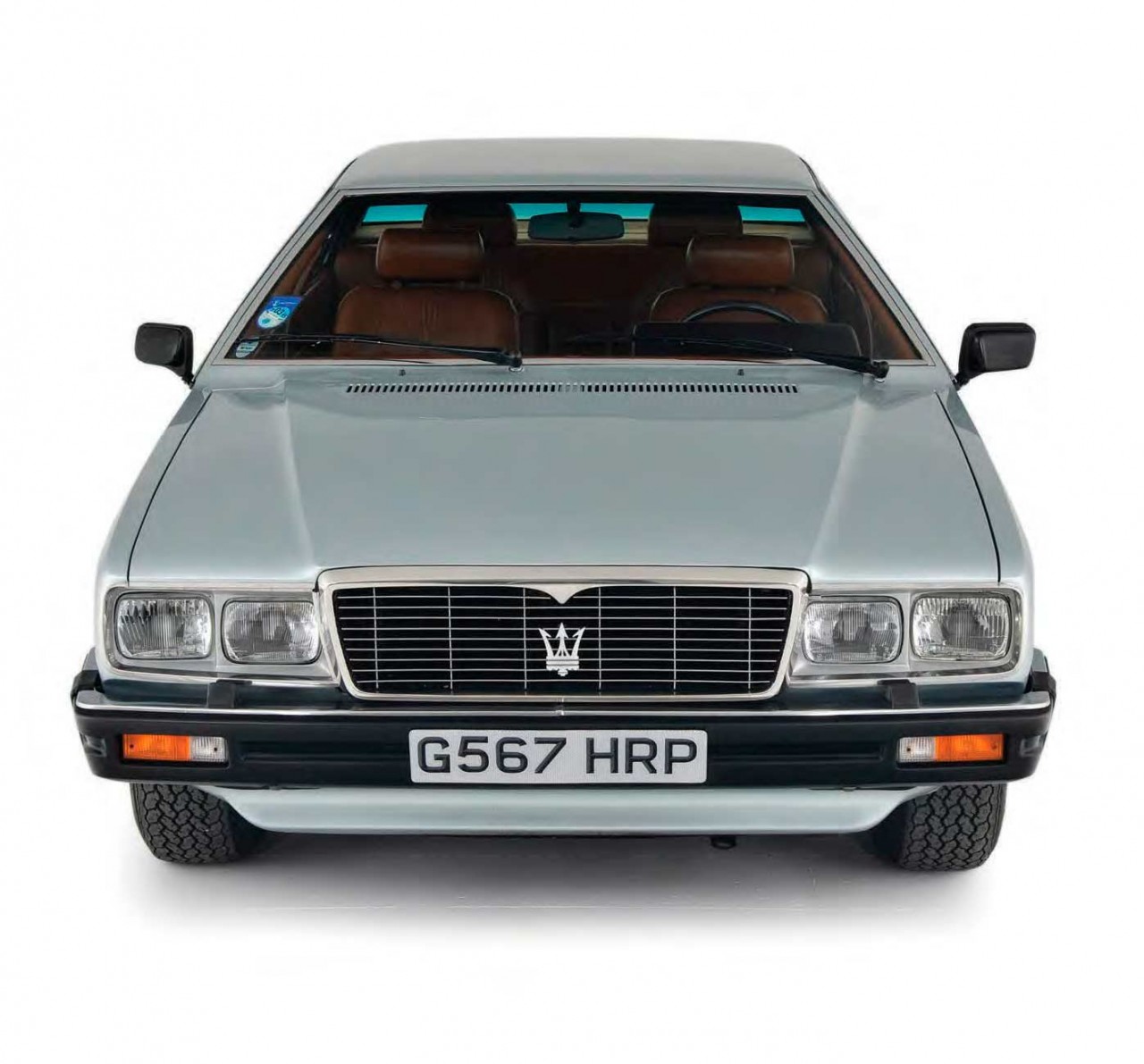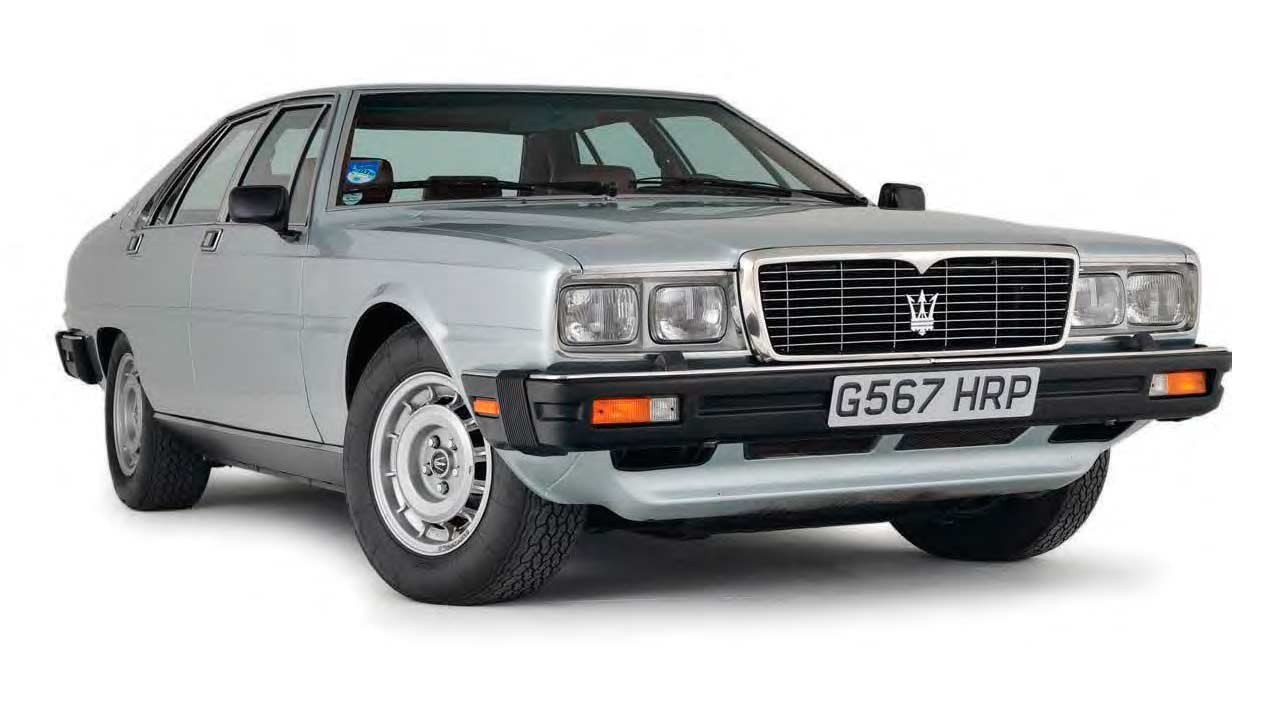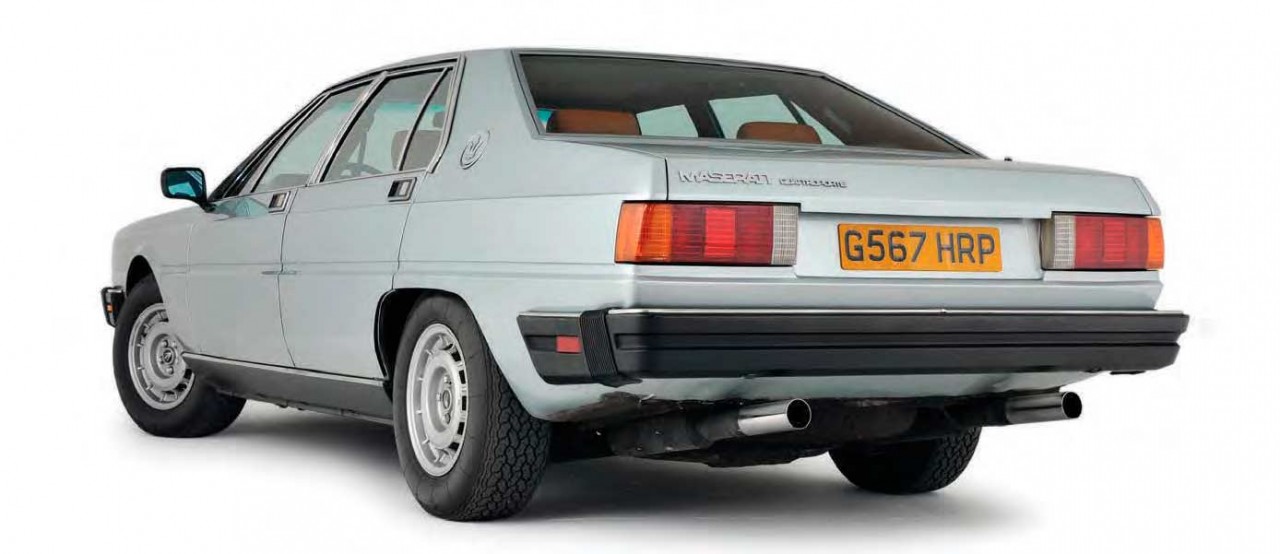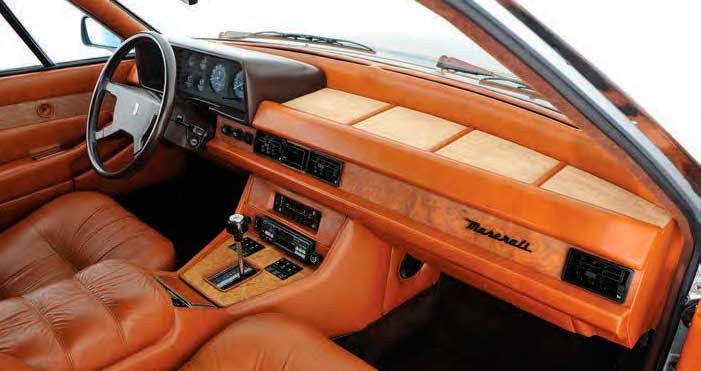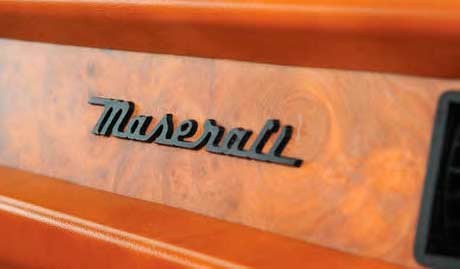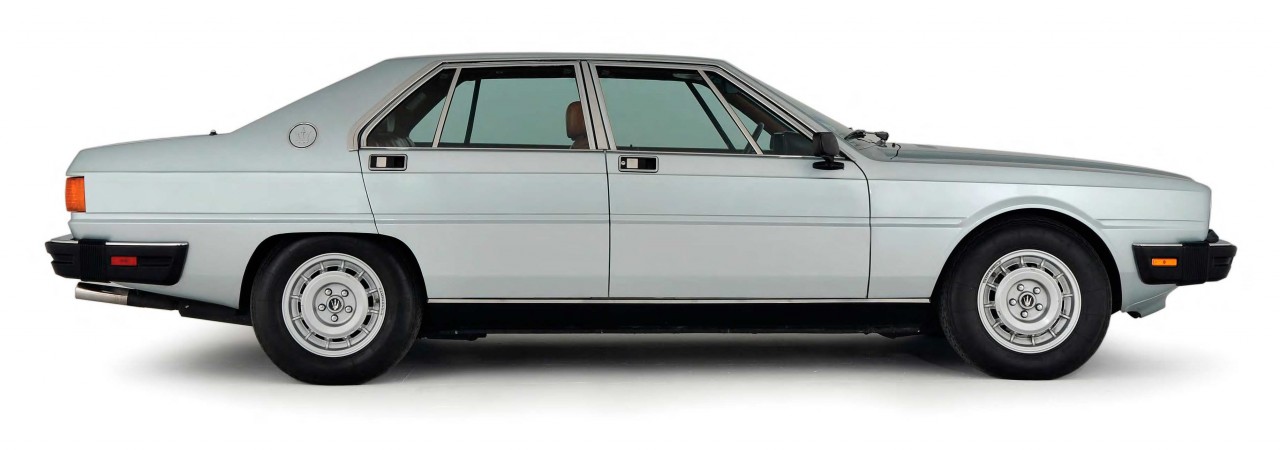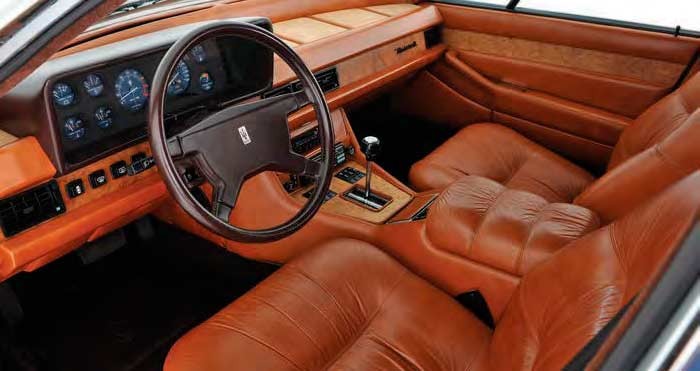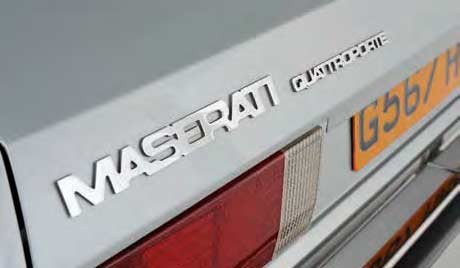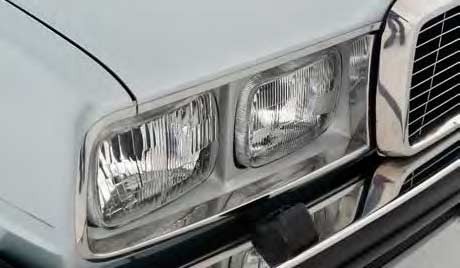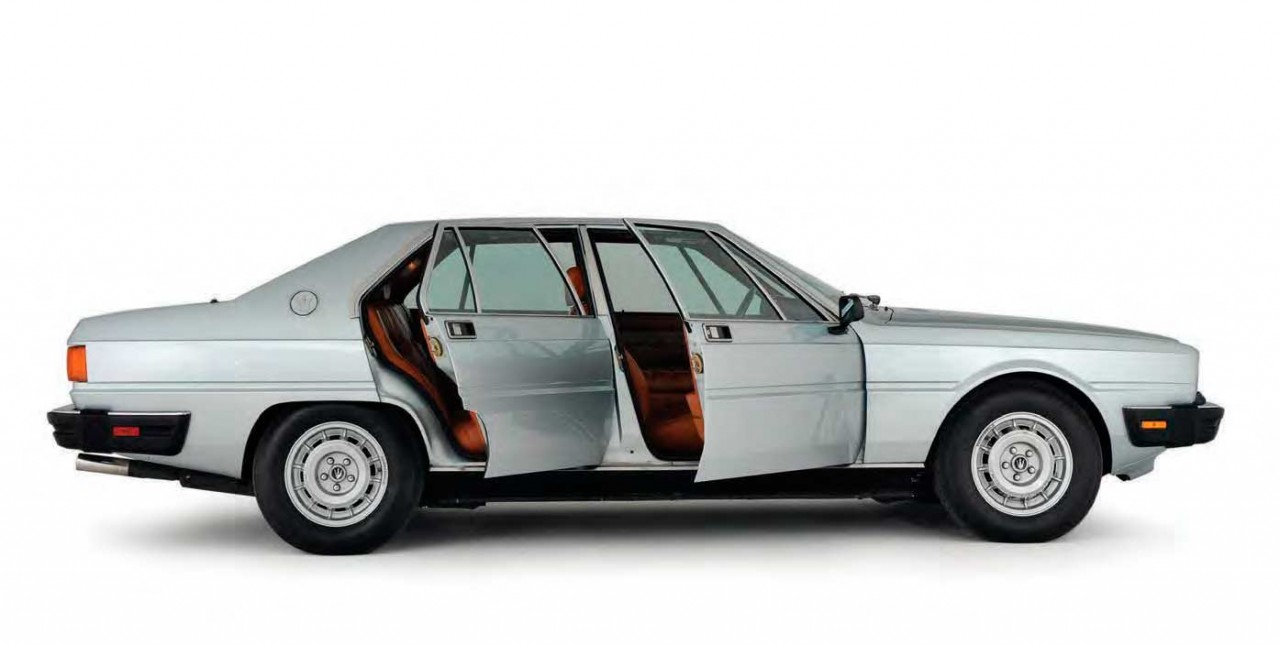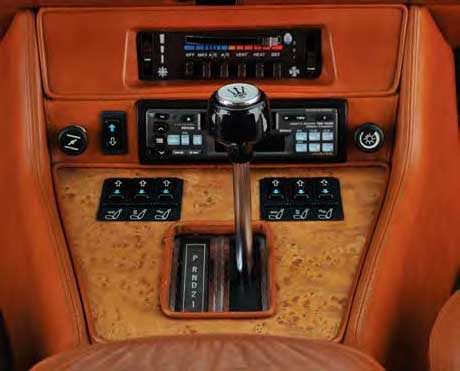MASERATI QUATTROPORTE: LAST OF THE OLD SCHOOL Full Collectors’ Guide to the big four-door Maser
When Alessandro de Tomaso took over at Maserati in 1975, he was keen not only to distance the company from its recent Gallic past but also to create a more back-to-basics approach. Maserati’s engineering and design ambitions under Citroen had, in his opinion, become too complex and costly, especially as the exotic car world was entering a recession resulting from the oil crisis.
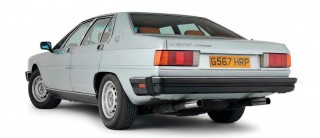
The Maserati Khamsin had gone into production but was selling very slowly. Designers Gandini and Giugiaro pressed on with two very unusual designs for a new four-door car. The Quattroporte II that Gandini designed at Bertone used the running gear from the Citroen SM, which for De Tomaso meant too much complexity and not enough Maserati DNA – it was front-wheel drive after all. De Tomaso stopped development immediately.
Down the road at ItalDesign, the uncompromising angularity of the Medici concept car was to prove that, left to his own devices, even the mercurial Giugiaro could get carried away and that his origami period may well have reached an illogical conclusion.
Even the Medici II, a reworking of the original, did nothing to impress the new Maserati boss. While considering his options, De Tomaso attempted to bolster cashflow by coming up with an interim model, the Kyalami. This hybrid of his existing De Tomaso Longchamp chassis and running gear with a Maserati V8 engine and a reworking of Tom Tjaarda’s original Longchamp body by none other than Frua went on sale at the end of 1976, only one year after De Tomaso took over. The Kyalami was never homologated for the US market (Maserati’s largest) and consequently only sold in very small numbers.

However, it did manage to buy De Tomaso some time to develop his next model, the Quattroporte III. This was the first time in the history of the company that a new model was conceived with the emphasis more on marketing and production than on engineering. De Tomaso knew instinctively which ingredients would be required and what would be his target market. The existing Maserati four-cam V8 engine was an essential part of the magic, as was relying on the well-established and respected Quattroporte name – the first series four-door Maserati had been a very successful model for the company in the 1960s.
Development time could be shortened and costs reduced if he utilised existing components for the running gear, and if the car were simpler in its conception and production then it would be quicker to build. Finally, with the oil crisis hindering European sales for the foreseeable future, why not make a car with more appeal to a market less affected, like the USA?
The sub-structure of the Quattroporte III looked very much like a stretched Kyalami, which in turn could trace its roots back through De Tomaso Longchamp and before that to the Deauville. The latter had been De Tomaso’s 1972 take on the Jaguar XJ6, including a facsimile copy of the Jaguar independent rear suspension system, which was now adopted by Maserati. As on Jaguars, this system used a Salisbury axle, mounted in a subframe with the driveshafts forming the upper suspension location. Twin springs and dampers on both sides supported the car and the brakes were inboard vented discs by Girling. At the front, again carried through from the Deauville, was a double wishbone system with vented Girling discs. The main metalwork was steel and very strong, though the chassis was crude compared to Maseratis of old, featuring square tube of shipbuilding proportions.
While the engine was already familiar to the cognoscenti, some further detail work was carried out in order to update it for use in the Quattroporte. The main bearing size was reduced and the oil system modernised to counteract previous complaints of oil starvation. A new water pump was designed to take up less space in front of the engine and an air pump was added to ‘filter’ exhaust emissions. Otherwise, the all-aluminium four-cam V8 with four twin-choke Weber DCNF carburettors and that emotive crackle-black finish was just as expected. The standard capacity was 4.9 litres, with a 4.2-litre version available to special order. The transmission was one of the few unique choices, being a Chrysler TorqueFlite automatic that had not been used by Maserati or De Tomaso before, although a ZF five-speed manual (the same as in the Khamsin) was an option.
For the body design, De Tomaso went back to Giugiaro but with a clear brief: make it simple, elegant and appealing to the Americans. Giugiaro achieved that and more with a design that also showed his understanding of Maserati heritage. At the front, an imposing grille and four headlights led to a large glass area and a sweeping tail with dual protruding exhaust pipes. By European standards, this was a very large car, being just shy of five metres long and weighing 1938kg. However, for the Americans it was almost compact.
The Quattroporte III was announced to the world at the 1976 Turin Show. That car was a prototype, displaying some features that would not make production, like slimmer bumpers and Longchamp wheels, but for De Tomaso, the publicity boost was essential. It showed that he meant business at Maserati and that he had ambition. Unfortunately, it would be three frustrating years before serious production could begin.
Maserati’s cashflow was in dire straits and De Tomaso had to play hardball with not only the labour unions but also his suppliers to stay afloat. This inevitably led to delays in the development of the Quattroporte but much more pertinent was the amount of time and money required to meet the ever more Draconian US emission and safety legislation. A less determined megalomaniac would have packed up and gone back to breeding horses in Argentina but De Tomaso fronted it out with a wry smile and a big cigar.
Finally, in 1979, production started in earnest with 120 examples built that year. Exports to the USA started in 1980 and the numbers for that year went up accordingly to 390 examples. This helped make it Maserati’s best year since 1974. During the first half of the 1980s, the Quattroporte III went on to be one of its most successful models, selling 2102 examples in total. De Tomaso had captured the zeitgeist both in Europe and the USA. In Europe, a Quattroporte was perceived as less ostentatious than the products of its competitors and discretion was a desirable attribute, especially in an Italy fraught with kidnapping and political turmoil. The Italian Head of State, Sandro Pertini, used a Quattroporte, for example, apparently even turning up to a meeting with Enzo Ferrari in one.
In the USA, the Quattroporte was a cool style statement and became something of a Hollywood star, featuring in films like The Running Man, Rocky and on TV in the legendary Miami Vice. Its most important starring role, however, was in The Godfather Part III. Until the modern era, it was the most-featured Maserati on film. Times were changing and Maserati’s clientele was too. The old-school, old-money royalty of times gone by was giving way to the modern rich of music and film.
Once in production, there was very little development because De Tomaso was already on to the next thing, which was of course the Biturbo. The heating control system was updated to use Biturbo parts in around 1984 but it was not until 1987 that there was any significant change. For a car that could trace its engine design back to 1963 and its chassis to 1972, to have lasted this long was already impressive, but sales had slumped against the weight of much more modern opposition. Maserati decided to celebrate what really was the end of its classic era with a final version of the Quattroporte called Royale.
The Royale featured minor detail changes on the outside such as wheel trims and stainless-steel sill covers but it was on the inside that most of the changes could be seen. The wooden dashboard inserts were now made from walnut instead of briar wood and the clock was a Lasalle oval with gold trim, like the later Biturbo. The interior was trimmed entirely in leather of a much higher quality than the standard car and some ‘regal’ touches were added, such as pewter goblets in natty little cubbies in the B-pillars, pull-out walnut picnic tables and even an optional fridge for rear passengers. Mechanically, there was no difference to the 4.9-litre V8, save for a change from black to red for the crackle finish on the cylinder heads. Like any limited edition, it was disproportionately expensive (nearly twice the price of the standard car) and only 53 examples were sold, the last one in 1990.
Maserati never made the Quattroporte III in right-hand-drive and never officially imported it to the UK. The position of the starter motor on the side of the engine precluded fitting a RHD steering rack, although two of the few personal imports were subsequently converted using Kyalami parts. At the end of the run, three Royales were sold new in the UK by the importer, Meridien Modena.
DRIVING IMPRESSIONS
The idea of a sports car in a saloon body has eternal appeal to the enthusiast. It was something that Maserati got right with the first Quattroporte and repeated with the third series. This extraordinary engine shows its character from the start, with a time-honoured throttle-pumping of the Webers, followed by a roar as throats are cleared. Even with the three-speed automatic transmission, acceleration is brisk and the gearchanges sharp. But it is the steering which is the single most impressive factor. The ZF hydraulically assisted rack has the most extraordinary feel and weighting for such a large car. Load up the suspension into corners and for sure there is some roll but there’s never a lack of control nor any feeling of wallow.
Both Road & Track and Quattroruote magazines tested the car when new and both were enthusiastic about the handling and performance. In 4.9-litre form, the V8 developed 290hp and even with the automatic gearbox, a 0-60mph time of 7.0 seconds was quoted by Maserati for the European version. Road & Track’s US emission-compliant version could only achieve 9.3 seconds. Maximum speed was quoted at 148mph, with a lack of gearing being the limiting factor. Certainly, a cruising speed of well over 100mph was comfortable. The one dynamic area where the car is weak is the brakes. With a large vacuum servo and vented discs all round, ultimately the brakes do work, but pedal travel is long and the feel spongy, which does not inspire confidence. In the cut and thrust of busy modern motorways, allowance for this must be made. It’s a shame because otherwise the cars are surprisingly agile and great fun to twirl around country lanes.
Of course, this is really a luxury saloon and a comfortable place to travel; “Deep leather seats as plush as an English Gentleman’s Club,” said Road & Track in period. Air conditioning is standard, along with electric windows and electrically adjustable seats. They even have a heated windscreen. But the most pointless accessory of all (yes, even including the pewterware) is the economy gauge. This is nothing more than a basic vacuum gauge but with green and red areas so that the driver can adjust his right foot to get the best fuel consumption – except that it’s almost impossible to make forward progress without straying into the red.
COST & VALUE ANALYSIS
The launch price in 1979 on the Italian market was 37 million lire, equivalent to around 29,000 euros. In 1981, the price Stateside was $56,000. At the same time, a Jaguar XJ6 Series III cost around $29,000, but a Rolls- Royce Silver Spirit was over $100,000. The Quattroporte compared well to the Rolls in terms of exclusivity and luxury branding and it’s no wonder that it did so well. However, as with all exotic cars with four doors, the secondhand market did not treat them as kindly as their sportier siblings. By the end of the 1980s, used Quattroportes could be bought for around £10,000 in the UK, even though they were only a few years old.
The combination of low purchase prices and inevitably high maintenance costs usually leads to a deterioration in condition in older cars but because the depreciation happened so quickly with the Quattroporte, they hadn’t had a chance to deteriorate. And they were also an instant classic, in that they were bought as cherished vehicles and not daily transport. That’s not to say you couldn’t use one every day, as they are robust and reliable cars, if a tad thirsty. But it means that, compared to more exotic Maserati models, they are usually in much better and more original condition today.
Like all classics, however, the last few years have seen a steady increase in values. The best examples, like the one featured here, will command around £50,000 today, and even more for the ultra-rare Royale. You can still buy a QPIII for £10,000, although nowadays that’s project money. There is no point in buying a project if you can find a good example, though, as the cost of restoration will be far more than the difference in purchase price.
In the Maserati world, the Quattroporte III has been seen for many years as the cheapest way to own a car from the classic era. The fact that it’s worth more today has not changed this, as all the other models have risen in value as well, some disproportionately so. However, it would be a shame to view the QPIII on these grounds alone. It has huge character that’s distinctly its own and deserves a better reputation. Who knows? As the focus of the classic car world now turns towards the cars of the 1980s, Maserati’s film star from that era could easily become a super-cool choice.
TYPICAL PRICES
4.2, 1979, LHD, blue: £13,500
4.2, 1980, LHD, blue, 55,000 miles: £19,500
4.2, 1981, LHD, silver: £24,500
4.2, 1982, LHD, brown, 21,000 miles: £42,000
4.9, 1984, LHD, white, 70,000 miles: £27,500
TECHNICAL SPECIFICATIONS MASERATI QUATTROPORTE III
ENGINE: 4136cc/4930cc V8 DOHC
BORE X STROKE: 88mm x 85mm/93.9mm x 89mm
COMPRESSION RATIO: 8.5:1
INDUCTION: 4 x Weber 42 DCNF carbs
POWER: 270hp at 6000rpm/280hp at 5600rpm
TORQUE: 289lb ft at 3800rpm/289lb ft at 3000rpm
TRANSMISSION: 3-speed Chrysler TorqueFlite automatic or 5-speed ZF manual, rear-wheel drive
SUSPENSION: Coil springs, telescopic dampers, anti-roll bar front & rear
BRAKES: Ventilated discs all round
TYRES: 215/70 VR15 (f), 215/70 or 225/70 VR15 (r)
WEIGHT: 1780kg
MAX SPEED: 143mph
0-62MPH: 9.0sec
Thanks to McGrath Maserati, Unit 8 Claggy Road, Kimpton, Herts SG4 8QB Tel: 01438 832161 www.mcgrathmaserati.co.uk
Pamperingly plush cabin has a very 1980s feel. Manual gearbox was available as an option to TorqueFlite automatic. Economy gauge is a bit of a travesty. It takes a lot welly to get the heavy QPIII moving, so fuel economy isn’t a great strength. This is a classic of 1980s Giugiaro styling, a rigorously applied version his ‘folded paper’ approach.
“The Quattroporte compared well to Rolls-Royce in terms of exclusivity and luxury – it’s no wonder it did so well”

